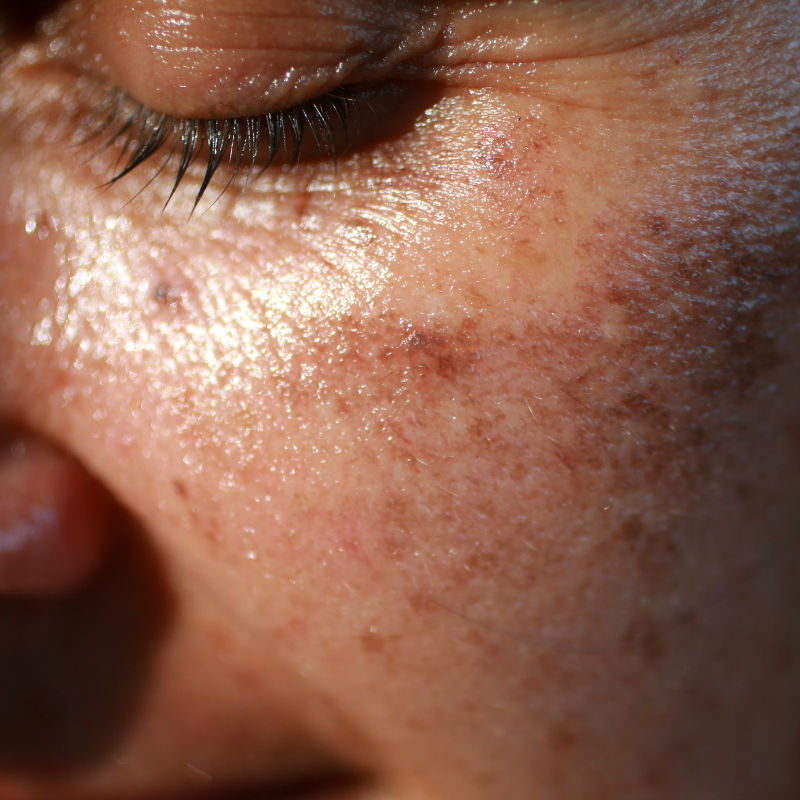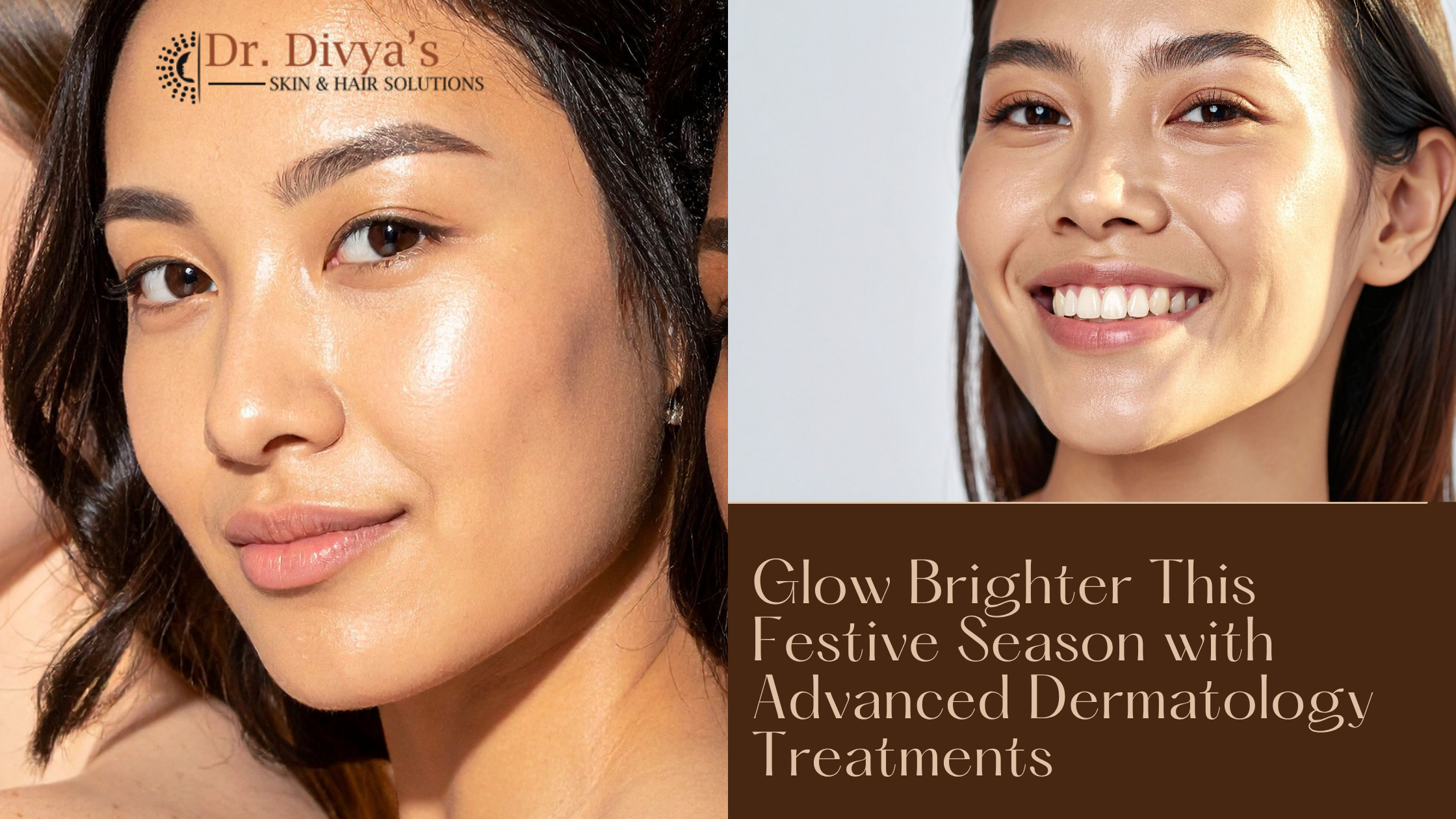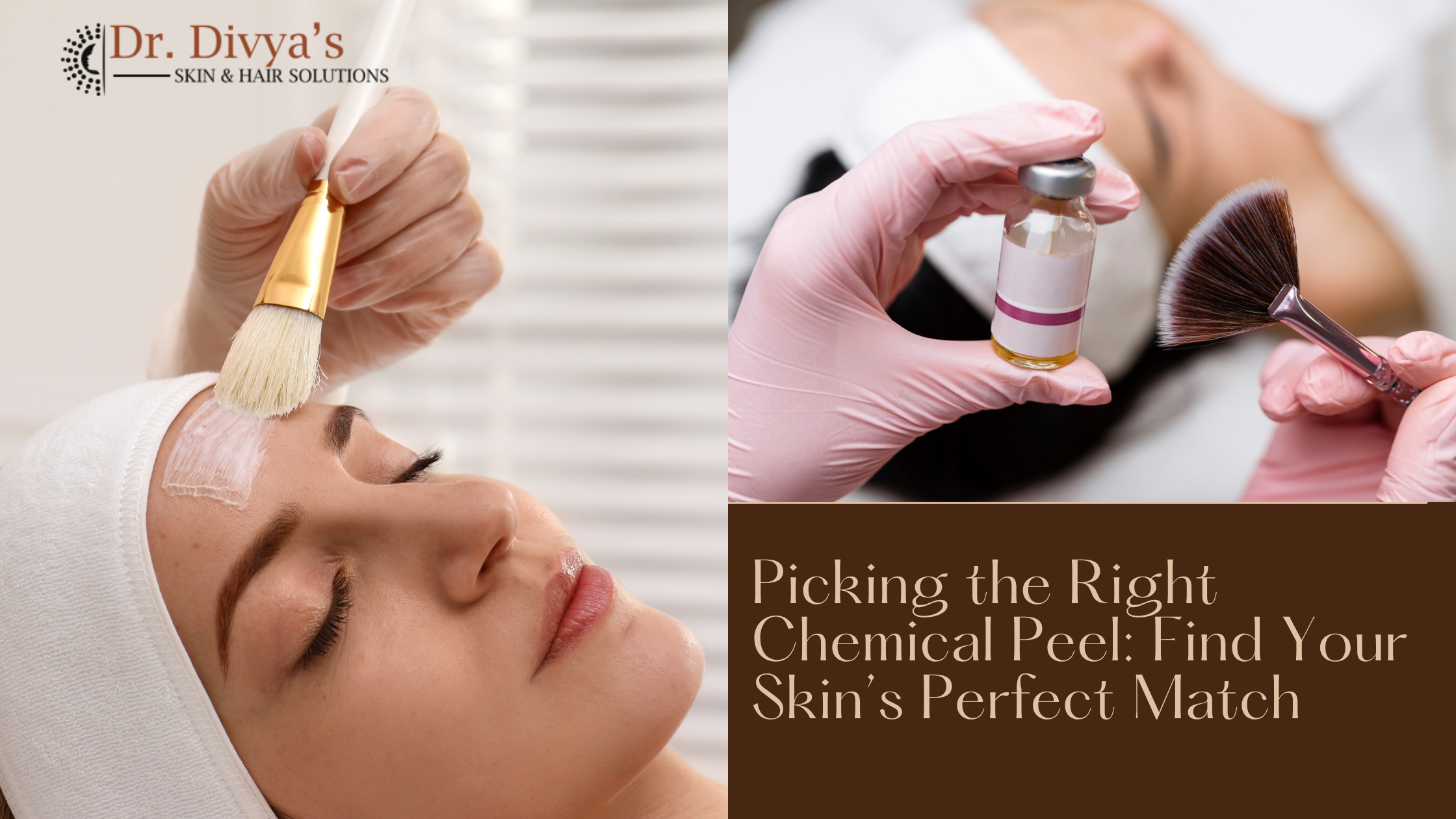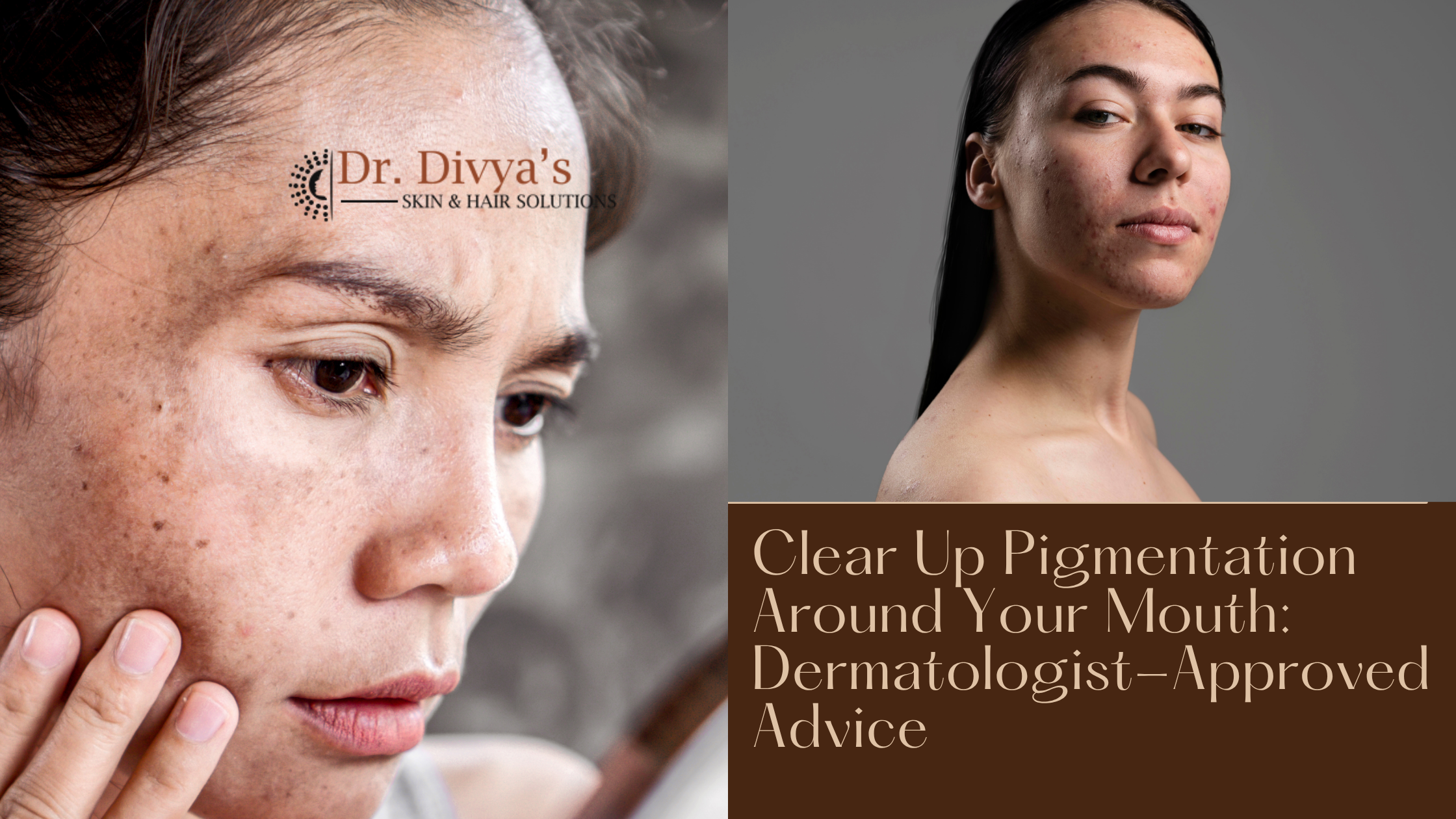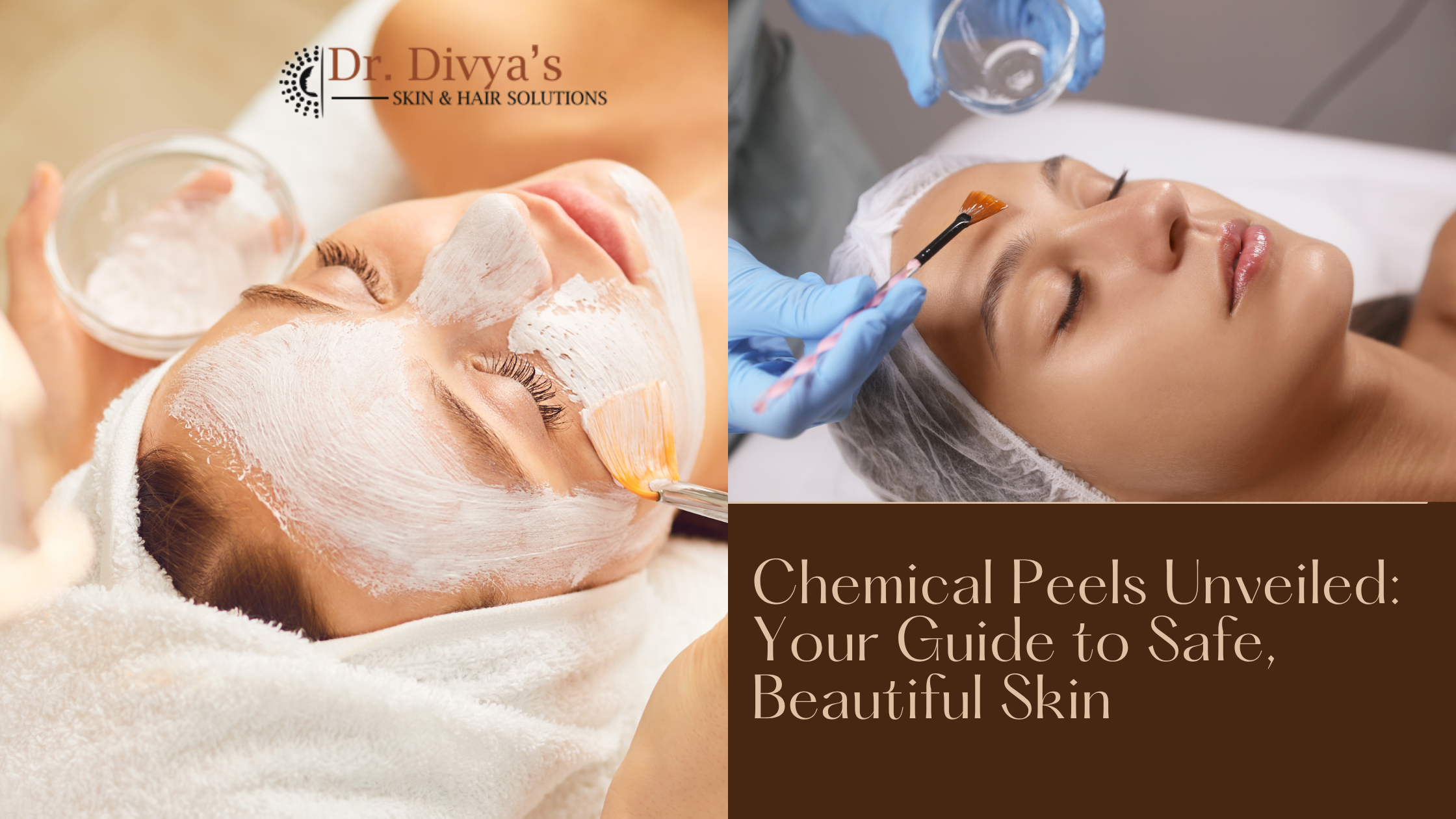Posted date on Oct 13, 2023
All those on a quest for radiant, flawless skin, welcome to our ultimate guide on hyperpigmentation treatment and prevention. Whether you're a skincare novice or a seasoned pro, this blog is your one-stop destination for everything you need to know about hyperpigmentation.
But before we dive into the nitty-gritty of treatments and prevention strategies, let's start by demystifying what hyperpigmentation is all about. So, grab your favorite beverage, cozy up in your favorite spot, and get ready to embark on a journey toward skin that radiates with confidence.
> What is hyperpigmentation?
Hyperpigmentation is a common skin condition that occurs when certain areas of the skin become darker in color than the surrounding skin. This happens because there is an excess production of a pigment called melanin, which gives our skin its color.
Think of melanin as the natural sunscreen for your skin. It's produced by special cells called melanocytes in response to factors like sun exposure, hormonal changes, or injury. When your skin is exposed to sunlight, melanin is produced to protect it from the harmful effects of UV rays. However, sometimes the melanocytes can become overactive or damaged, leading to an uneven distribution of melanin.
Hyperpigmentation can take various forms:
-
Sunspots (Solar Lentigines): These are dark spots that often appear on areas of the skin that are frequently exposed to the sun, like the face, hands, and arms.
-
Melasma: Melasma is a type of hyperpigmentation that typically occurs in patches, often on the face. It is more common in women and is often related to hormonal changes, such as pregnancy or birth control pill use.
-
Post-Inflammatory Hyperpigmentation (PIH): This occurs after an injury or inflammation to the skin, such as acne, cuts, or burns. The affected area becomes darker as it heals.
-
Freckles: Freckles are small, concentrated areas of increased melanin production and are often genetic.
-
Age Spots (Liver Spots): These are similar to sunspots and become more common as we age. They are usually caused by long-term sun exposure.
Hyperpigmentation is generally harmless and doesn't pose any health risks. However, it can be a cosmetic concern for many people who want to achieve an even skin tone. Dermatologists can recommend various treatments, such as topical creams, chemical peels, laser therapy, or light-based treatments, to reduce or remove hyperpigmentation and improve the appearance of the skin. It's also crucial to use sunscreen regularly to prevent further darkening of these areas and to protect your skin from UV damage, which can worsen hyperpigmentation.
> How to prevent hyperpigmentation?
Preventing hyperpigmentation involves taking steps to protect your skin from factors that can trigger or worsen it.

Here are some strategies to help you prevent hyperpigmentation:
-
Sun Protection: Sun exposure is a major contributor to hyperpigmentation. To protect your skin wear broad-spectrum sunscreen with at least SPF 30 every day, even on cloudy days. Reapply sunscreen every two hours when outdoors or after swimming or sweating. Use protective clothing, such as wide-brimmed hats and sunglasses.
-
Avoid Tanning: Tanning beds and sunbathing can exacerbate hyperpigmentation..
-
Be Gentle with Your Skin: Vigorous scrubbing or harsh skincare products can irritate your skin and potentially lead to post-inflammatory hyperpigmentation (PIH). Instead, use a mild, non-abrasive cleanser and avoid using hot water on your face. Be gentle when applying skincare products and use your fingertips rather than scrubbing with a cloth or sponge. Avoid picking at acne or blemishes to prevent PIH.
-
Manage Hormonal Changes: If you are prone to melasma, consult with a dermatologist for hormonal management options, especially if you are pregnant or considering birth control methods that may exacerbate melasma.
-
Protect Your Skin During Healing: After procedures like chemical peels or laser treatments, it's essential to follow your dermatologist's aftercare instructions diligently. This includes avoiding sun exposure and using recommended skincare products.
-
Use Skin-Lightening Products: Dermatologists can prescribe or recommend over-the-counter skin-lightening products containing ingredients like hydroquinone, retinoids, or alpha hydroxy acids. These can help fade existing hyperpigmentation and prevent new spots.
-
Stay Hydrated: Proper hydration helps maintain healthy skin. Drink enough water to keep your skin supple and support its natural healing processes.
-
Eat a Balanced Diet: A diet rich in antioxidants, vitamins, and minerals can promote healthy skin. Include fruits, vegetables, and foods with essential fatty acids in your diet.
-
Manage Stress: High stress levels can exacerbate skin conditions. Practice stress-reduction techniques like meditation, yoga, or deep breathing exercises.
Remember that preventing hyperpigmentation often involves a combination of these strategies. Consult with a dermatologist for personalized recommendations tailored to your skin type and specific concerns. They can also provide guidance on skincare products and treatments suitable for your needs.
> Best Treatments for Hyperpigmentation:
Based on the type and severity of hyperpigmentation, type of treatment can be opted. Here are some of the best treatments commonly recommended to treat hyperpigmentation.
1. Topical Skin-Lightening Agents:
> Hydroquinone: It's available in different strengths and often requires a prescription This should be used only after consultation with your dermatologist
> Retinoids: Topical retinoids, such as tretinoin, can promote skin cell turnover and help fade hyperpigmentation over time. They may also improve skin texture and tone. Again never start retinoids without consulting your dermatologist
> Alpha Hydroxy Acids (AHAs): AHAs like glycolic acid and lactic acid can help exfoliate the skin, fade dark spots, and improve overall skin texture. Similar to other treatment options these should be started under recommendation of a dermatologist
2. Chemical Peels:
Chemical peels work by exfoliating the top layers of the skin to improve its appearance and reduce the appearance of hyperpigmented areas. Chemical peels are a chemical solution typically containing acids such as alpha hydroxy acids (AHAs), beta hydroxy acids (BHAs), or trichloroacetic acid (TCA).
These acids work by breaking down the bonds that hold the outermost layer of skin cells together. This process is often referred to as "exfoliation" or "peeling." The removal of the top layer of skin encourages the body's natural skin renewal process. This leads to the growth of new, healthy skin cells to replace the peeled layers.
It's important to note that there are different types of chemical peels, the choice of the specific chemical peel and its strength will depend on your individual skin type, the type and severity of hyperpigmentation, and your dermatologist's assessment. Additionally, post-treatment care and sun protection are essential to maintain the results and prevent further hyperpigmentation.
3. Microdermabrasion:
Microdermabrasion is a non-invasive cosmetic procedure that can be used to improve the appearance of hyperpigmentation and various other skin issues. This involves using a specialized device to gently remove the topmost layer of dead and damaged skin cells. The device typically uses either fine crystals or a diamond-tipped wand to achieve this exfoliation.
Microdermabrasion can help improve the appearance of hyperpigmentation by removing the darkened or pigmented cells on the surface of the skin. As new skin cells replace the removed ones, they often have a more even pigment distribution. This procedure has little to no downtime. It typically causes mild redness and temporary sensitivity, which usually subside within a few hours to a day.
It's important to note that microdermabrasion is generally most effective for mild to moderate cases of hyperpigmentation. More severe or deeply rooted hyperpigmentation may require more intensive treatments such as chemical peels or laser therapy.
4. Laser Therapy:
Laser devices can target and break down melanin in hyperpigmented areas. They are often used for conditions like sunspots and melasma. This non-ablative treatment doesn’t remove or damage the superficial layers of the skin but causes controlled injury in the dermis which is the layer of skin that lies beneath the epidermis. The energy produced by the laser heats up the dermis and stimulates a skin repair response which causes collagen regeneration.
5. Microneedling:
Microneedling can be an effective treatment for hyperpigmentation, but its effectiveness depends on the type and severity of the hyperpigmentation, as well as other individual factors. It is also known as collagen induction therapy, involves the use of a device with fine, sterile needles to create thousands of micro-injuries in the skin's surface. These micro-injuries stimulate the skin's natural healing process, prompting the production of collagen and elastin, two proteins that are essential for healthy, youthful-looking skin.
Microneedling can be effective for various types of hyperpigmentation, including post-inflammatory hyperpigmentation (PIH), sunspots, and melasma. The effectiveness of microneedling for hyperpigmentation can vary from person to person. Some individuals may experience significant improvement after a few sessions, while others may require more treatments.
It's important to have realistic expectations when considering microneedling for hyperpigmentation. While it can be effective, it may take several sessions spaced a few weeks apart to see noticeable improvement, and results can vary. Consulting a dermatologist is essential to determine if microneedling is the right treatment for your specific type of hyperpigmentation and to develop a personalized treatment plan.
6. Spot Reduction:
Spot reduction techniques target specific areas of hyperpigmentation or dark spots. These can include:
> Cryotherapy: Freezing the hyperpigmented spot with liquid nitrogen to remove it.
> Chemical Cauterization: The use of chemicals to burn or destroy the pigmented area.
> Laser Spot Removal: Precisely targeting and removing individual dark spots with lasers.
7. Hollywood Peel (Spectra Peel):
The Hollywood Peel, also known as the Spectra Peel, is a laser treatment that uses advanced Spectra laser technology. It is designed to address various skin concerns, including hyperpigmentation. The Spectra laser emits specific wavelengths of light that target melanin in the skin, breaking it down and promoting the natural healing process.
This treatment can help reduce the appearance of hyperpigmentation, improve skin texture, and promote collagen production.
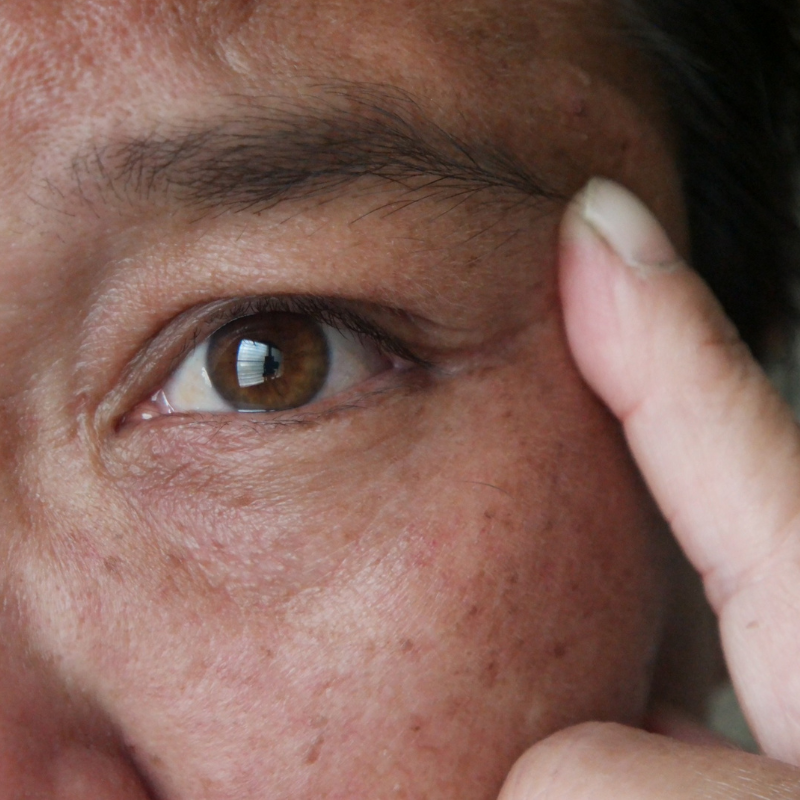
Keep in mind that the results of any treatment may vary depending on the individual and the specific type of hyperpigmentation. Treatment plans are often tailored to the patient's needs and may involve a combination of these treatments for the best results. Additionally, it's essential to follow post-treatment care instructions and use sun protection to maintain the results and prevent the recurrence of hyperpigmentation.
At Dr. Divya’s Skin & Hair Solutions we recommend treatment plans tailored to your specific needs. Visit us at our clinic or book your appointment today to restore your glow.
